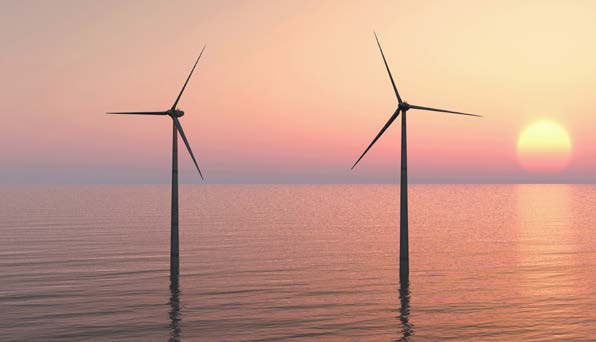All Biral visibility and present weather sensors work by transmitting a beam of near-infrared light and measuring the amount which is scattered into the receiver from particles in the air. A major source of background infrared is sunlight, so the sensor needs to account for any sunlight shining into the receiver before it can calculate the visibility. This background infrared is normally removed by the sensor’s processing circuit.
Effects of Orientation
The long, narrow hoods used by the sensor shade the optics from direct sunlight when the sun has risen above the horizon, reducing the background intensity to manageable levels. When mounted in fixed locations, it is recommended that the sensor is orientated such that the rising or setting sun does not shine directly into the receiver optics. If the receiver is exposed to direct sunlight through a clear sky, the intensity is sufficiently strong to temporarily overload the receiver circuit and cause the sensor to report the maximum visibility.
When sensors are mounted on a wind turbine nacelle, it is not possible to have a fixed orientation with respect to north, and therefore there is a possibility that the rising or setting sun will shine directly into the receiver optics on some occasions. If the atmosphere is very clear and the sun shines directly into the receiver, the sensor may report a higher visibility than it should. In conditions of reduced visibility, such as during fog, mist, or haze, saturation will not occur since the diffuse sunlight will be weak, and the sensor will operate correctly.
What this means for obstruction light control
If the sensor saturates in very clear conditions, causing an overestimation of visibility, this will not cause a false setting of the obstruction lights as both the actual and reported visibility will be high. In lower visibility conditions, saturation does not occur and the sensor operates correctly.
The ability of the sensor to warn of reduced visibility on a wind turbine is therefore not affected by changes in orientation.
Wind Energy
As the world addresses the challenges of global warming, green energy production, and in particular wind energy generation, has increased significantly. Biral can provide sensors for the control of aviation obstacle light intensity, wind speed measurement, and site assessment.
The Deutscher Wetterdienst (German Meteorological Service – DWD) has certified the VPF-710, SWS-100, and SWS-200 sensors as suitable for use in visibility-controlled wind turbine obstruction light systems.
Visibility Controlled Wind Turbine Obstruction Lights
The growth in wind energy production has seen both an increase in the size of wind turbines and a larger number of turbines in closer proximity to towns and villages. To reduce the impact of these turbines on their neighbours, whilst maintaining the safety of low-flying aircraft, many countries promote the control of obstruction warning light intensity according to the local visibility.
The unique design of the SWS and VPF sensors makes them particularly suited to this application, where high reliability must be combined with immunity to interference from the warning lights they control. A significant proportion of the world’s wind turbines that have warning light intensity control use Biral sensors for visibility measurement.
Wind Speed Measurement and Site Assessment
Wind turbines use anemometers to control alignment and monitor the available wind energy. Biral can provide a range of anemometers suitable for use on turbines, from simple cup and vane devices through to more sophisticated ultrasonic sensors.
Before a wind turbine or wind farm is installed, an assessment of the site is necessary to ensure the available wind resources will repay the installation and operating costs. Biral can provide First Class cup and vane IEC 61400-12-1 class 0.5 compliant anemometers for use on masts. Additionally, Biral offers SODAR systems that can provide real-time 3-dimensional wind profiles in the height range of interest for site assessment.
